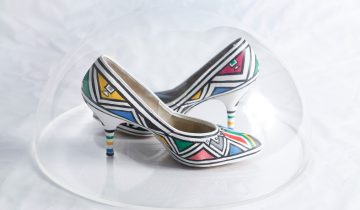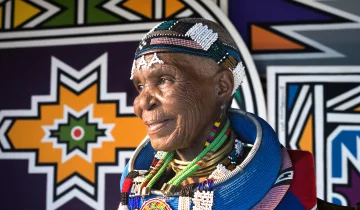Then I Knew I Was Good at Painting: Esther Mahlangu, A Retrospective
Reading Time: 6 minutes Immerse yourself in the captivating world of Esther Mahlangu as we unveil ‘Then I Knew I Was Good at Painting’, a retrospective celebrating her dynamic fusion of Ndebele tradition and contemporary artistry



 No products in the basket.
No products in the basket.